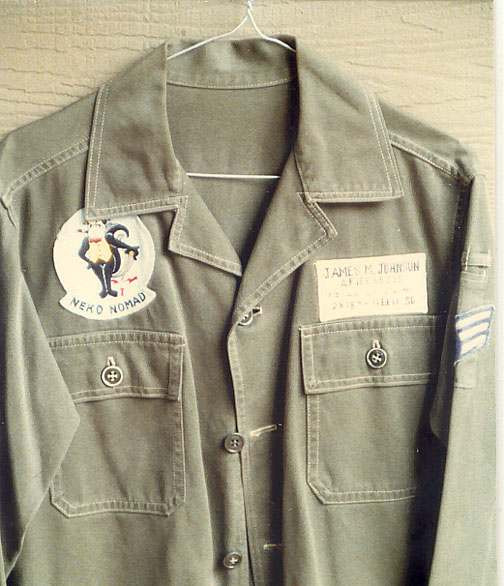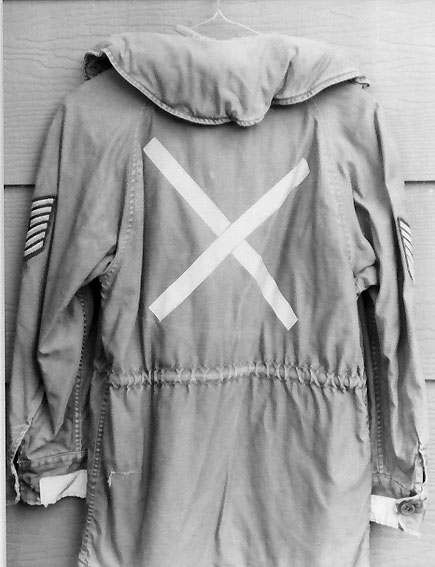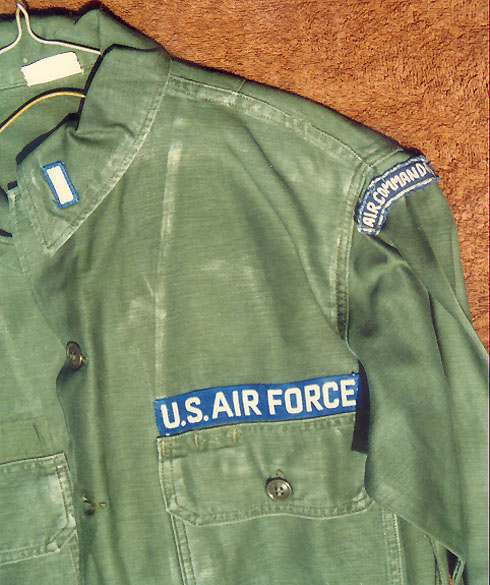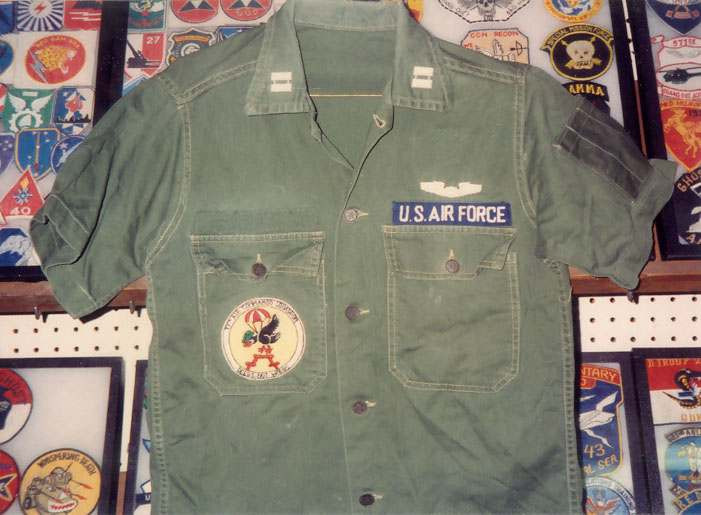Once upon a time, roughly fifteen years ago, the world of collecting USAF fatigue uniforms in the United States was a niche pursuit, shared by a mere handful of enthusiasts. Among this small group, I was one, alongside two others who occasionally crossed paths with me at Manion’s auctions, a testament to the limited interest these garments held at the time.
These pieces of military history often went unappreciated. Many had their patches removed, destined for donation bins at base thrift shops and Goodwill stores. In fact, the USAF thrift shop at Hickam Air Force Base had a practice of displaying them for three weeks before donating any unsold items to the Civil Air Patrol, highlighting their low perceived value within the broader collecting community.
However, for those of us with an eye for military history, these fatigue shirts held stories and unique details. From specific unit insignia to modifications reflecting theater of operation, each shirt offers a glimpse into the lives and service of Air Force personnel. This article revisits selections from my personal collection, showcasing the evolution and variations found within vintage Air Force Uniform Shirts, particularly the fatigue shirt, from the mid-20th century onwards. We will delve into the details that distinguish these shirts, offering insights for collectors and enthusiasts alike who are interested in understanding the nuances of the air force uniform shirt.
-
One notable piece is a shirt belonging to a 27th Fighter Squadron Missile Maintenance technician. The yellow nametape, featuring stenciled lettering, is particularly striking. It’s crafted from a reinforced cloth, reminiscent of strapping material. Interestingly, the absence of a USAF tape suggests a possible 1950s origin. Adding to its vintage character are the brown plastic buttons, common in that era.
-
Another intriguing item is a fatigue shirt of Asian manufacture, adorned with a Japanese-made Neko Nomad unit patch. The nametape is large and white, presenting four lines of information, including the owner’s first and last name, duty station, a line in Japanese, and unit designation. A practical modification is the added pen pocket on the left sleeve. This shirt, likely acquired from Manion’s auction, is also believed to date back to the 1950s, showcasing the global influence on even seemingly standard air force uniform shirts.
 Vintage USAF fatigue shirt with Neko Nomad patch and Asian tailoring details
Vintage USAF fatigue shirt with Neko Nomad patch and Asian tailoring details
-
A shirt from the 49th Fighter Interceptor Squadron presents an interesting case. The F-106 Delta Dart patch immediately catches the eye. Upon closer inspection of the left sleeve, the faint shadow of a higher NCO rank becomes visible. This suggests the shirt was likely recycled, repurposed for a lower-ranking airman, a practical measure within military supply chains. This piece likely hails from the early 1960s, reflecting the evolving insignia and usage of the air force uniform shirt during the Cold War period.
-
At first glance, a shirt bearing a MAC (Military Airlift Command) patch might appear unremarkable. However, closer scrutiny reveals a pilot’s wing, rather than enlisted airman’s wings. This raises questions: Was it a mistake in insignia application? Or did it belong to a “retread” officer, someone transitioning from enlisted to officer ranks? The presence of reflective flight line tape on the sleeves, designed to enhance visibility in low-light conditions on airfields, adds another layer of intrigue.
Further examination of the shirt’s interior reveals that the flight line tape was also sewn onto the back, emphasizing the importance of visibility for personnel working on flight lines, and providing a practical detail often found on air force uniform shirts used in specific operational roles.
 USAF MAC patch shirt with pilot wings and reflective tape for flight line visibility
USAF MAC patch shirt with pilot wings and reflective tape for flight line visibility
- Moving beyond shirts, a USAF field jacket, resembling the M-65 but with a distinct collar, comes into view. The large TAC (Tactical Air Command) pocket patch is prominent. Yet, the most remarkable feature is again the use of reflective flight line tape, applied to both the front and back of the jacket. Under a nighttime light, it illuminates intensely, demonstrating its high reflectivity and the jacket’s heavy use during airfield operations in the 1960s. This jacket highlights how reflective tape became a standard safety feature on certain types of air force uniform shirts and outerwear.
 USAF field jacket with TAC patch and reflective flight line tape
USAF field jacket with TAC patch and reflective flight line tape
-
A standard issue OG-107 cotton fatigue shirt represents the classic air force uniform shirt of the Vietnam era. It features direct embroidered rank and pilot wings, along with name and USAF tapes. These embroideries were often done in Southeast Asian countries like Thailand or Vietnam. This particular shirt likely dates to the early years of the Vietnam War, embodying the standard uniform of the period.
-
In contrast to fully badged uniforms, some air force uniform shirts from this period were intentionally minimalistic in their insignia. One example is a starched cotton OG-107 fatigue shirt bearing an Asian embroidered Air Commando tab. Beyond the name, rank, and USAF tapes, this shirt never carried any additional insignia, representing a deliberate choice for a lower profile. This particular shirt was reportedly found at the Hickam AFB thrift shop in the 1980s, demonstrating how these pieces could circulate for years after their initial use.
 OG-107 air force uniform shirt with Air Commando tab and minimal insignia
OG-107 air force uniform shirt with Air Commando tab and minimal insignia
-
Another example of minimal insignia application is showcased in a fatigue shirt where the qualification badge is beautifully hand embroidered, most likely in Thailand. The deep blue background of the insignia is particularly rich in color. The name “SKINNER” is closely chain stitched, and the 1st LT rank insignia is tightly sewn on without the typical blue border, rather than being direct embroidered. The USAF tape, however, is standard issue. This unique piece was discovered at a Salvation Army store in Oahu, highlighting the unexpected places where vintage air force uniform shirts can be found.
-
An Asian-made fatigue shirt was once displayed at the RECON Militaria museum in Dallas, TX. The rank and pilot wing are direct embroidered, while the USAF tape is hand embroidered. An added sleeve pocket, made from a slightly different shade of material, is noticeable. The Asian-dyed thread has subtly faded, outlining the shirt’s construction. Small-sized buttons are another characteristic feature. The Air Commando Squadron pocket patch is of Thai manufacture. This shirt represents the intricate details and variations found in air force uniform shirts produced in different regions.
 Asian made air force uniform shirt with embroidered details and Air Commando patch
Asian made air force uniform shirt with embroidered details and Air Commando patch
-
Another Thai-made fatigue shirt features a pocket patch for the 553rd RECON Squadron and its associated wing. This unit operated EC-123 aircraft, electronic monitoring versions of the Constellation. The lightweight material of the shirt was a desirable feature in warmer climates. The name and USAF tapes are custom embroidered, and the wing may be as well. Again, small-sized buttons are present. This shirt was reportedly acquired at a Manion’s auction for a price considerably lower than the value of the patches, a common occurrence for uniform shirts at the time, as patches were often valued more than the shirts themselves.
-
Moving forward in time, a favorite uniform shirt is that of an Air Liaison Officer attached to a unit of the 1st Cavalry Division. Dating this uniform is challenging. The material suggests the synthetic fabrics introduced in the 1970s. This shirt was likely worn in the immediate post-Vietnam War period. While subdued insignia were common in theaters of operation like Vietnam, Korea, Thailand, and the Philippines, full-color insignia are believed to have remained in use within the US until the mid-1970s. This piece represents the transition in materials and insignia styles in air force uniform shirts during the 1970s.
[
